I may earn a small commission from purchases made through product links on this website at no extra cost to you. As an Amazon Associate I earn from qualifying purchases.
Last updated: January 21, 2024
This guide explores the 15 most common types of rakes that can be used in and around the house, from the backyard to the garden and even the roof.
Did you know that there are literally dozens of different types of rakes available that all have their own characteristics and uses?
I was also surprised, but it makes sense when you consider all the different things one can do with a simple rake.
In this article, I will outline 15 rake types that can be used for various domestic chores. Do keep in mind that there will always be some overlap between these rakes, and some of them can be used in more than one way.
1. Leaf Rake
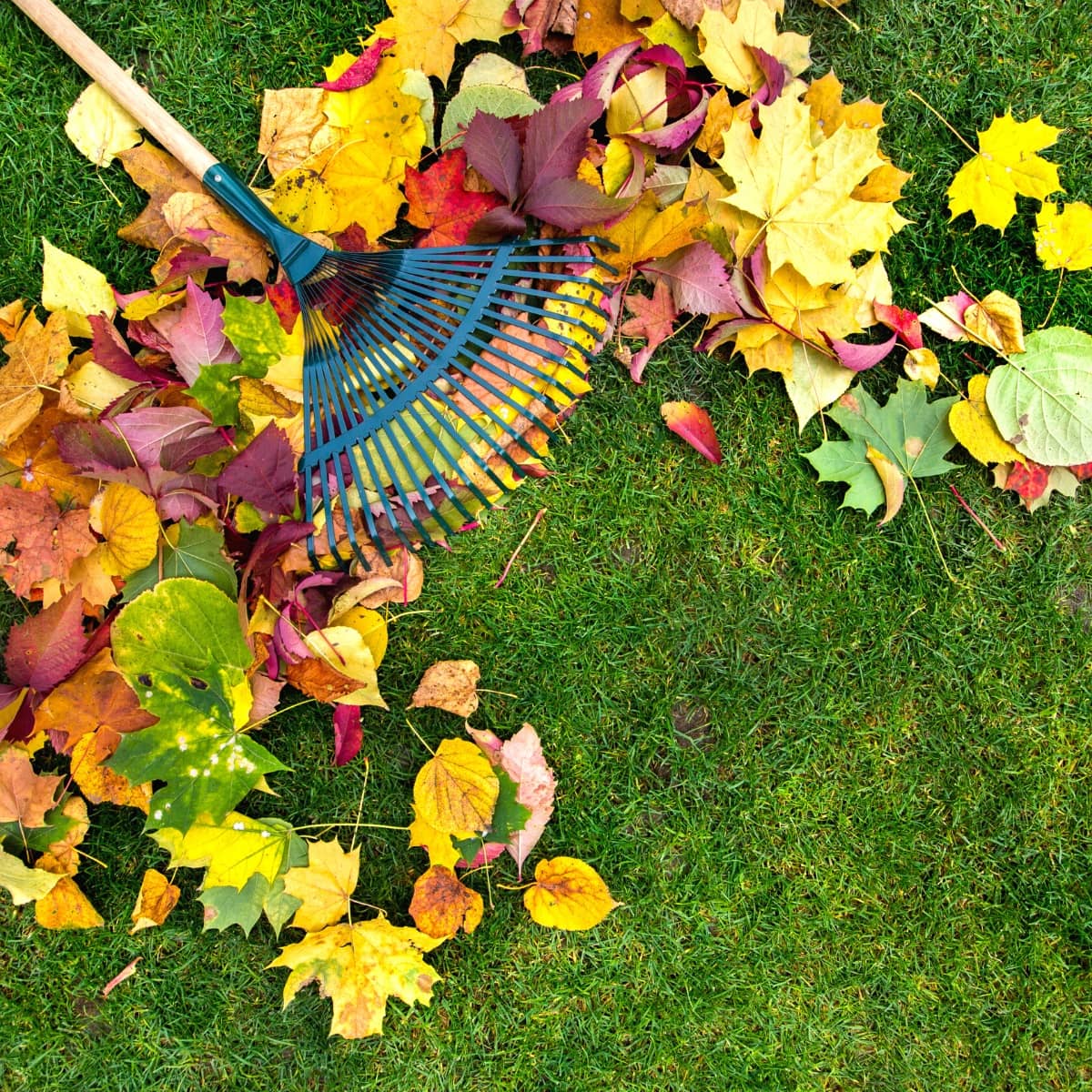
The most common type of rake, the one that most people will think of when hearing the word rake, is the classic leaf rake, often referred to as a lawn rake.
A leaf rake and a lawn rake are very similar and often used interchangeably. I consider a leaf rake a type of lawn rake with plastic tines rather than metal ones, and as such, it is most suitable for easy leaf cleaning in smaller yards.
Leaf rakes are designed to deal with leaf build-up without causing damage to the ground or soil.
2. Lawn Rake
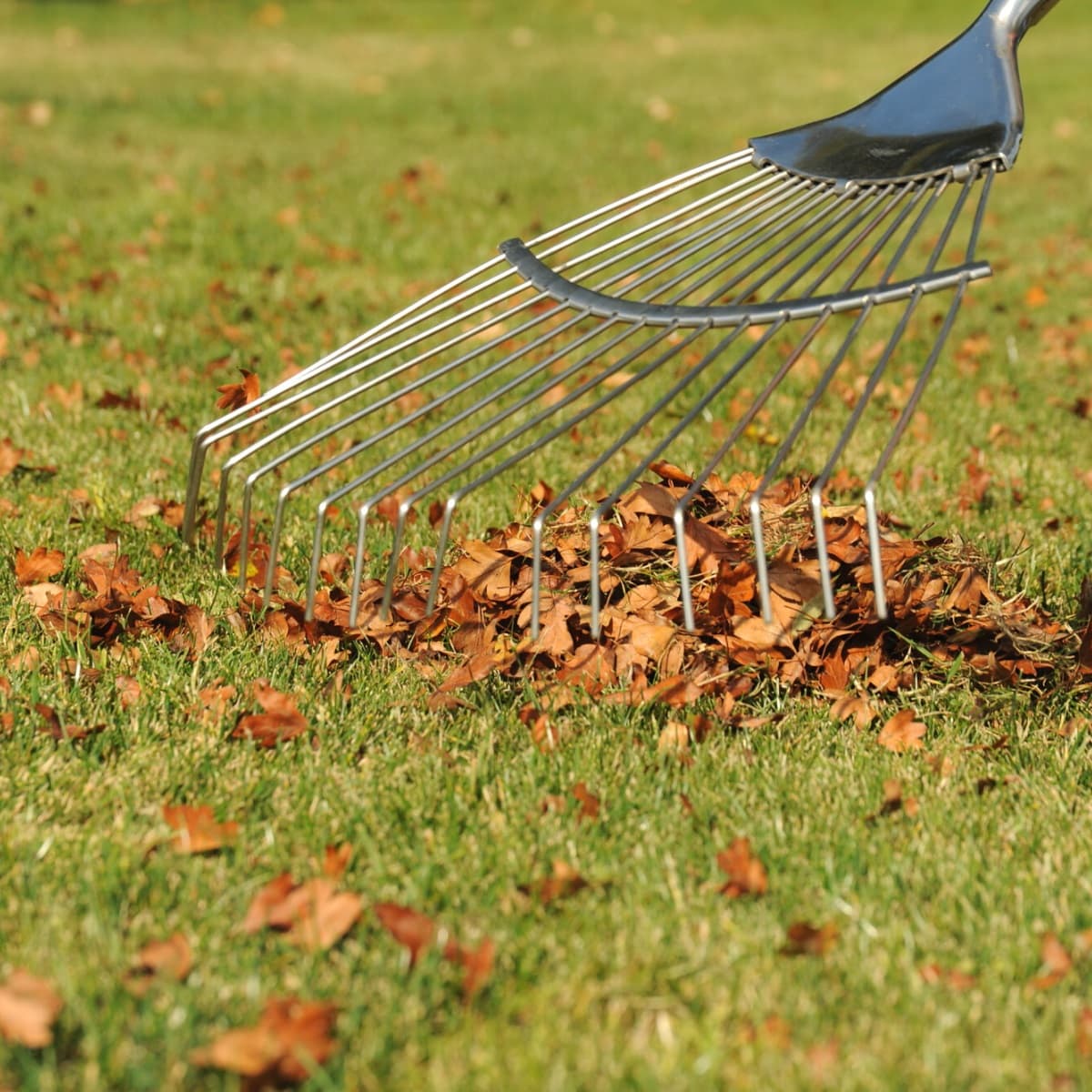
As mentioned, a lawn rake is often also considered a leaf rake but has metal tines instead of plastic ones. As such, a lawn rake is better suited for more intense lawn work with more leaf build-up.
A lawn rake (and also a leaf rake) typically has long tines shaped like a hand fan with a piece in the middle holding the tines in place. At the bottom, the edges of the tines are bent to create that claw effect.
Lawn rakes are mainly used for collecting leaves, but can also be used for dealing with heavier garden debris such as sand and gravel.
Take a look at my guide with tips on how to rake leaves the easiest, quickest and most efficient way.
3. Bow Rake
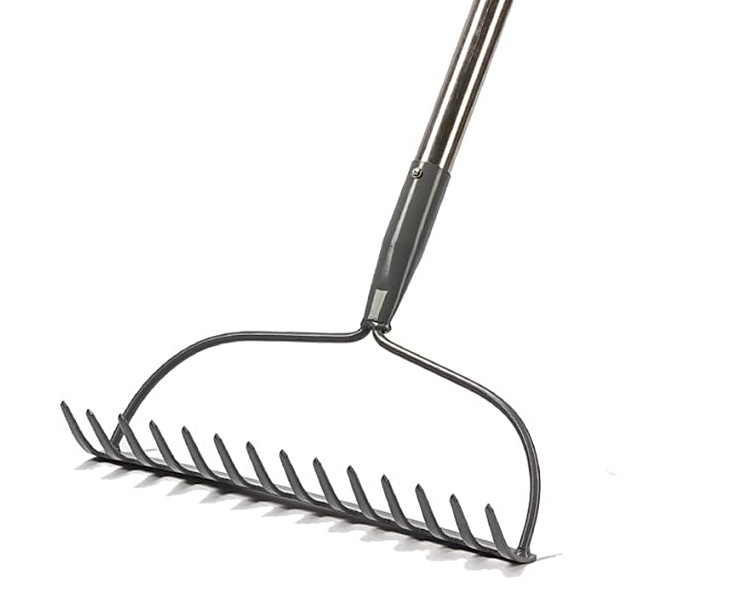
A bow rake is often called a garden rake and is designed for more heavy-duty gardening work. The tines of a bow rake are typically short (around 3 inches) and made of metal.
You may also come across the term bow head or bowhead rake, which is essentially the same as a bow rake, just a slightly different name.
Bow rakes typically have arches on the side of the head (as opposed to flat-head rakes), which add more stability and support.
Check out my guide with reviews of some of the best bow rakes you can buy online.
4. Flat Head Rake
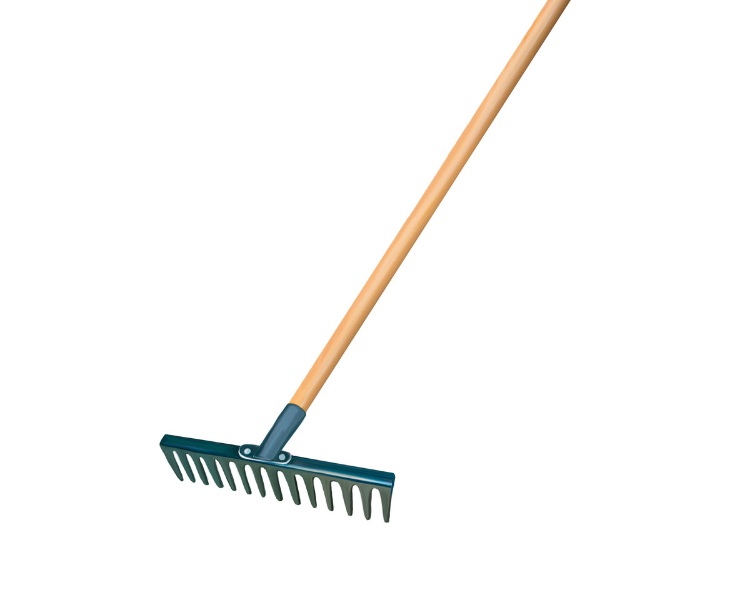
Also referred to as a level head rake, the flat head rake is very similar to a bow rake. A flat-head rake literally has a flat head that creates a T shape when attached to the handle.
Bow rakes, bow head rakes, flat head rakes, and level head rakes are all considered garden rakes, and are generally used for treating soil, like breaking up soil and smoothing it out.
5. Shrub Rake
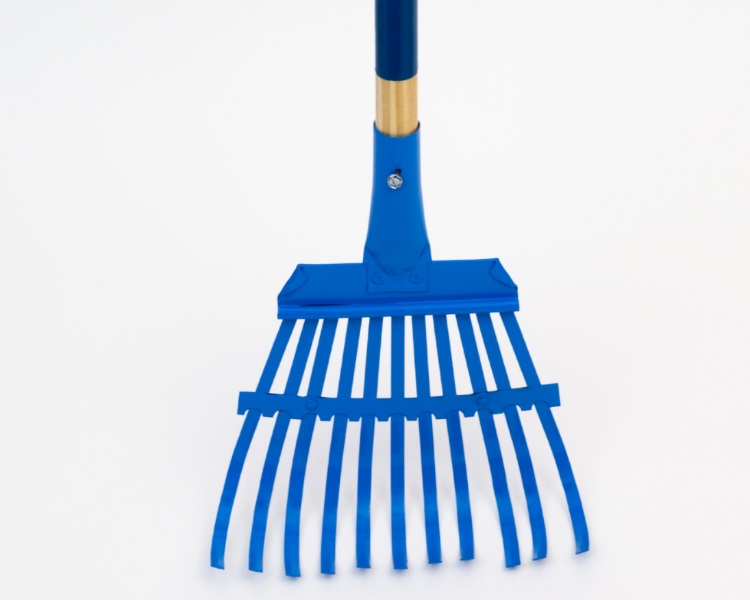
As the name may suggest, a shrub rake is designed to fit into smaller spaces, such as between and under shrubs and plants, flower beds, and also around fencing.
Shrub rakes are essentially very similar to leaf rakes, but they have a more narrow design so that they can be used to clean up leaves and other light debris in shrub-like areas.
Another good use for shrub rakes is managing mulch in a garden. The smaller design lends itself well to that purpose as space in those areas is limited, and plants won’t get damaged.
6. Hand Rake
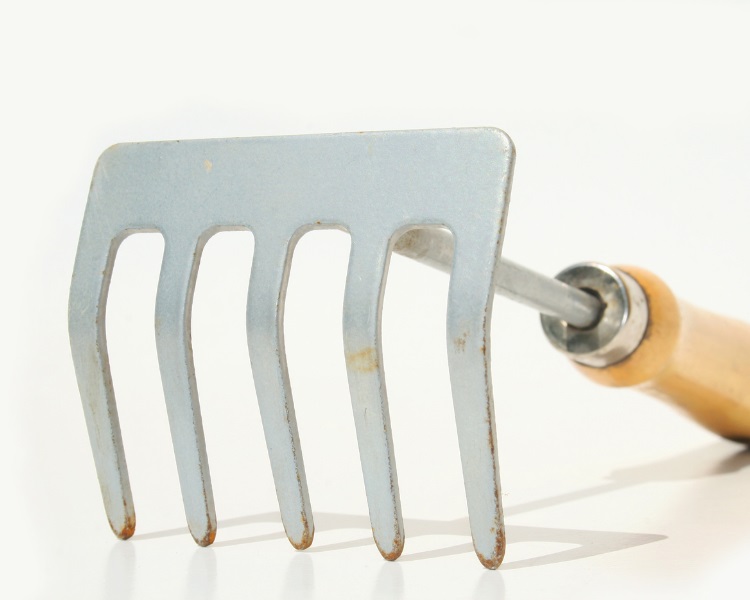
A hand rake is precisely that: a smaller-sized handheld rake that can be managed by one hand, almost like a mini version of a garden (bow or flat head) rake.
Hand rakes are designed for digging and moving soil around in smaller areas, where a conventional garden rake would be too large. They can also be used for cleaning up flower beds.
7. Thatch Rake
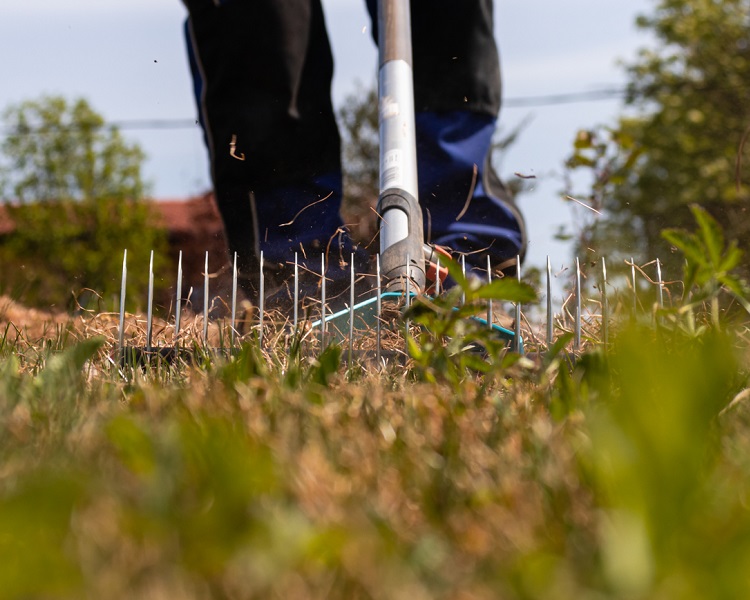
In the context of gardening, thatch is the layer of living and dead plant matter that builds up around the base of grass plants.
A thatch rake is designed to break up and remove thatch in your lawn, with sharp blades (often on both sides of the head) that can take care of that important task.
Removing thick and excessive thatch is essential as it can create root problems and harbor pests and diseases. If the thatch is too excessive, you may need to use a motorized dethatcher (see below).
Take a look at my guide with reviews of some of the best thatching rakes you can buy online.
8. Gravel Rake
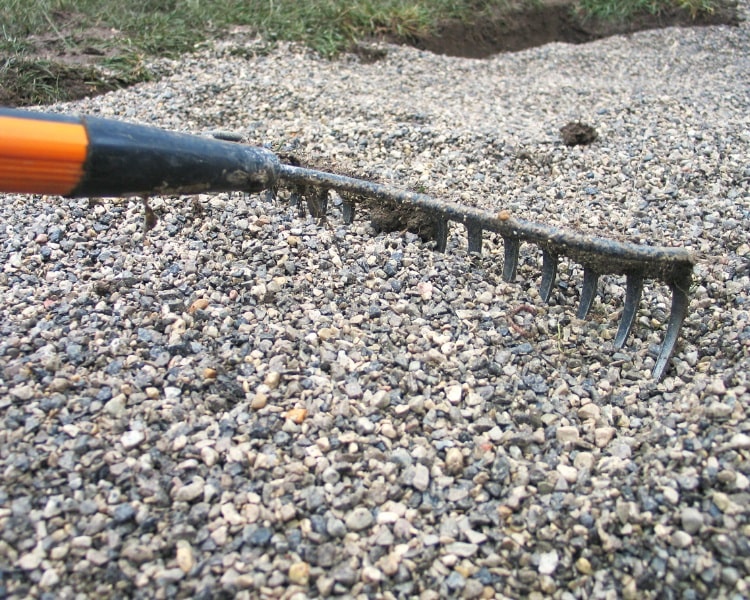
Also referred to as stone rakes or tarmac rakes, gravel rakes are designed to perform heavy-duty gardening jobs such as moving gravel, asphalt, and small stones.
Gravel rakes are perfect for spreading and leveling out gravel, stones, pebbles, mulch, and large amounts of wood chips.
A gravel rake typically looks like a regular garden rake but has a wider head, more widely spaced and thicker tines, and is made of heavy-duty materials such as metal and aluminum.
9. Landscape Rake
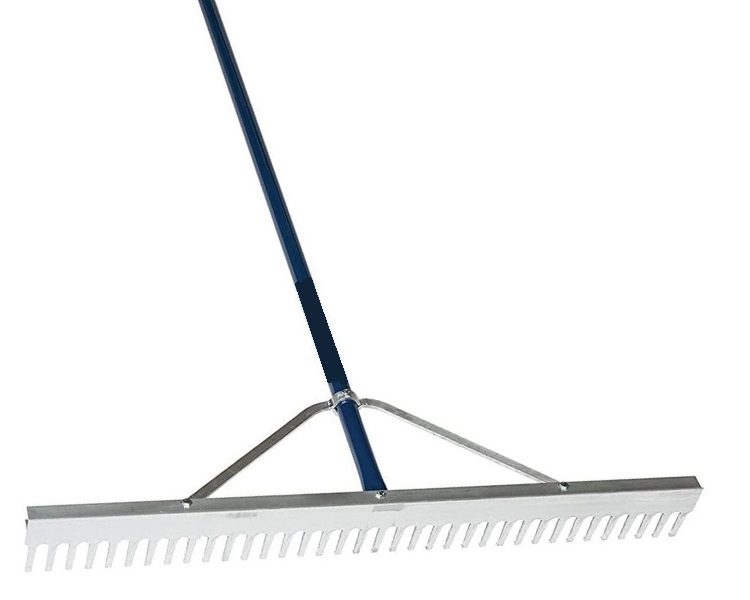
Landscape rakes are very similar to stone rakes, both in design as well as in how they are supposed to be used. They’re designed for heavy-duty work, and often have robust metal tines.
A landscape rake has a wider head and evenly spread out teeth, and is used for leveling ground materials, such as sand and gravel, and to manage soil in larger yard areas.
It is particularly useful for removing rocks, roots, and other debris from the ground, as well as for breaking up clumps of soil and leveling uneven surfaces. The rake’s wide head and closely spaced teeth allow it to collect and move soil efficiently.
In addition to soil preparation, landscape rakes are also employed for tasks like spreading mulch, gravel, or sand.
10. Berry Rake
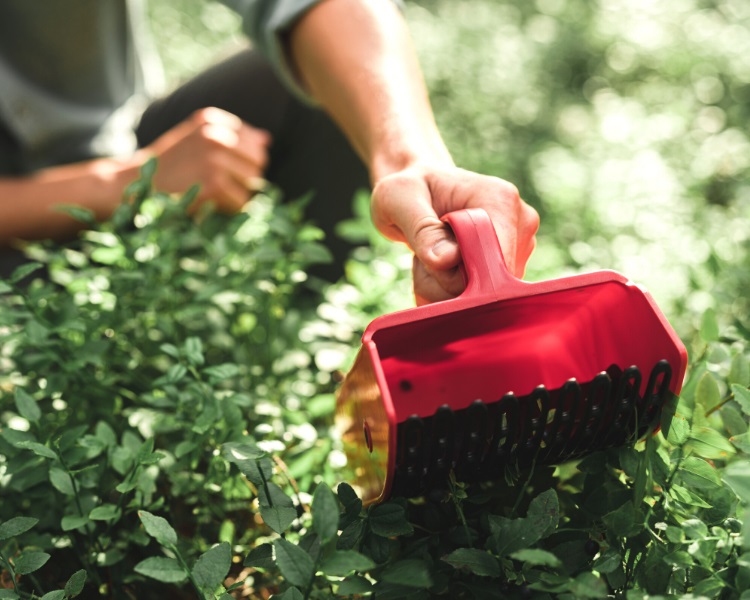
That’s right; a berry rake really is a thing. Admittedly, berry rakes are typically found on farms and not so much in backyards, but they deserve a mention nonetheless.
A berry rake is essentially a combination of a rake and a scoop, designed to pull berries from trees and catch them in the same movement.
Rakes designed for berry picking or harvesting are typically smaller and have specific features to minimize damage to delicate berries.
11. Leaf Scoop Rake
The leaf scoop rake is a bit of a niche version of a traditional leaf rake, and works by simply collecting and scooping leaves without having to bend.
The obvious advantage is that it allows you to quickly fill up the waste bin or compost bin without having to use two separate tools for raking and removing leaves.
I’m not a huge fan of this type of rake and prefer to use a regular leaf or lawn rake to do this type of work.
- Earthwise Power Tools by ALM yard grabber tool with telescoping handles for the...
- Gator Grabber made of powder-coated steel shafts
- Leaf grabber with heavy-duty poly-fiber jaws with teeth to hold on tight to...
12. Roof Rake
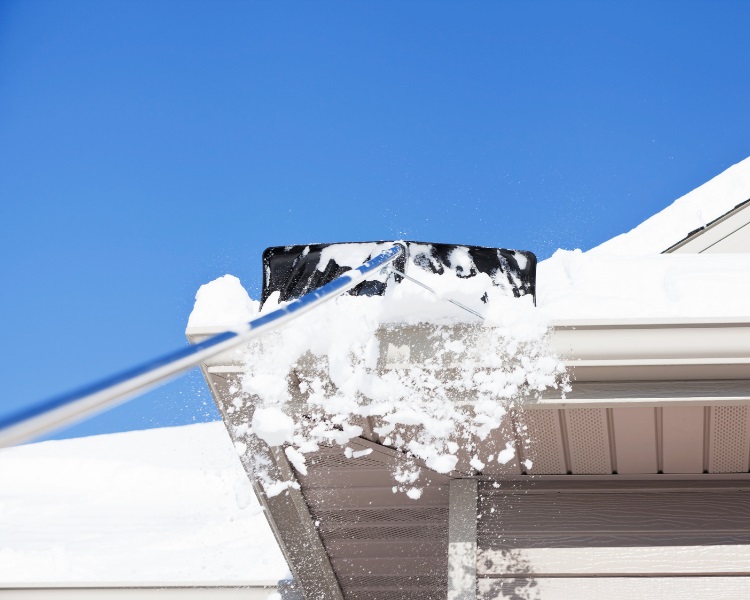
Another specialized rake type that you won’t easily find in many households is the roof rake, which can actually be super helpful.
A roof rake is designed to reach roofs or other off-the-ground surfaces to remove snow or other unwanted items or debris by simply scraping it down.
Roof rakes are typically lightweight as they often need to be held over the head, and they come with extendable handles to be able to reach as far as possible onto the roof.
13. Lake Rake
A lake rake, otherwise called a pond rake or an algae rake, can be used for collecting aquatic weeds or algae from a body of water.
If you have a rather large pond in your garden or backyard, a specialized lake rake can certainly come in handy when keeping that pond clean and healthy.
To use a lake rake, stand at the edge of the water and drag the rake over the water surface or over the bottom of the pond to collect all the bad stuff the pond doesn’t need.
- 3-in-1 Collapsible Pond & Beach Rake - The Razer Rake is a great all-around...
- Razor Sharp Teeth for Improved Weed Removal: Sharp metal teeth are perfect for...
- 36" Rake Head Provides a Wide Harvesting Surface: The heavy-duty rake head is...
14. Concrete Rake
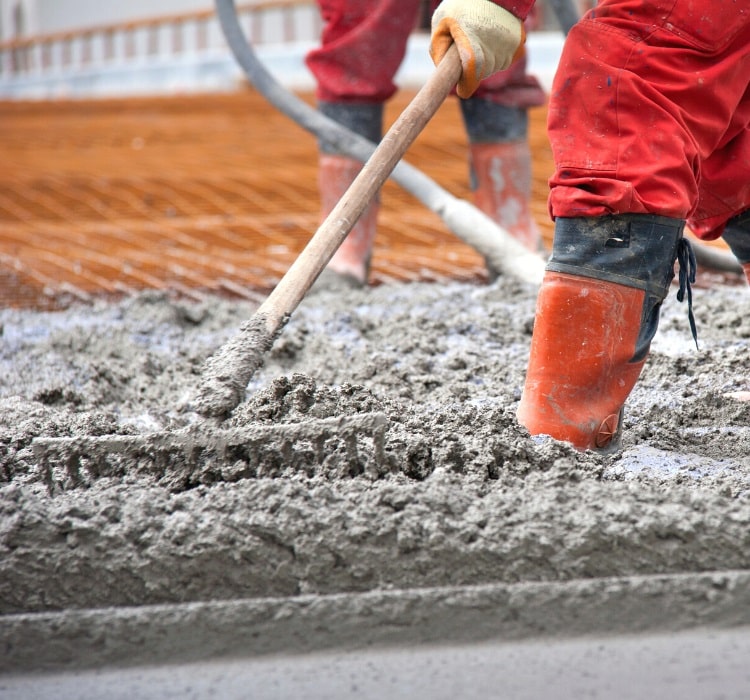
A concrete rake is not the most common type of rake used around the house, but it can be useful if you have to deal with concrete in your lawn or backyard.
As the name may suggest, a concrete rake is used for leveling out an area of fresh concrete after it has been tamped. Some models have teeth, while others come with a straight-edged blade attached to a handle.
Also known as a concrete placer rake or a concrete spreader, the concrete rake pushes and pulls the concrete across the surface when freshly poured.
15. Motorized Rake
It may come as no surprise that rakes also have motorized versions, although it must be said that raking is one of those gardening jobs that you would typically want to do manually.
Where a motorized rake comes in handy though is when you need to remove excessive thatch, for which you can use a so-called dethatcher, such as this Greenworks model on Amazon.
Admittedly, removing thatch can be quite a physically challenging task, especially when you have a bigger area to process, in which case a motorized rake certainly can be useful.
If you’re looking for more ways to quickly clean up piles of leaves, check out my leaf blower buying guide covering electric and gas-powered leaf blowers.
- KEEP YOUR YARD HEALTHY : dethatch in early spring or early fall for cool-season...
- POWERFUL MOTOR : 10A motor provides the power you need to tackle the toughest...
- 14” DETHATCHING PATH : allows you to complete jobs faster and more efficiently
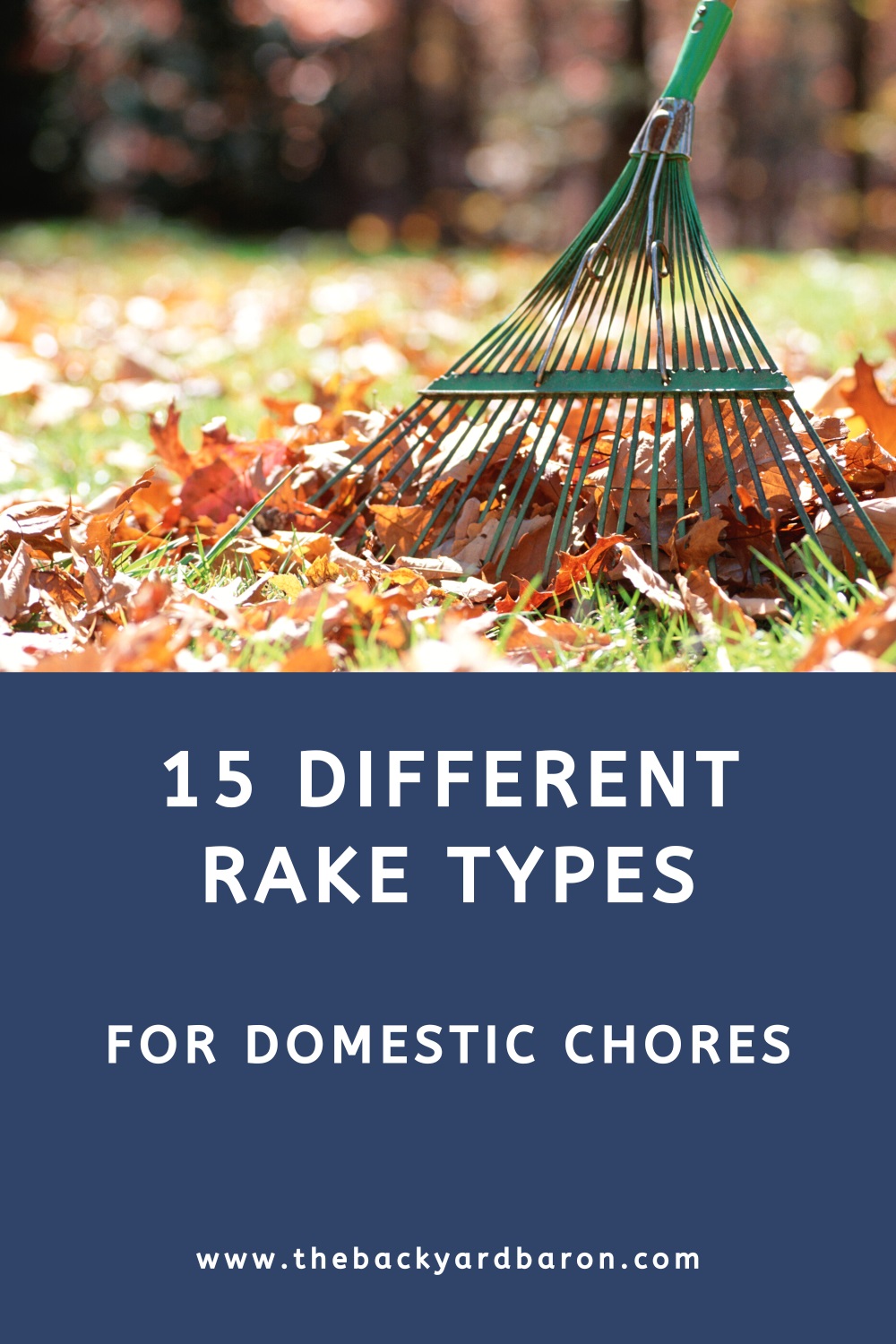
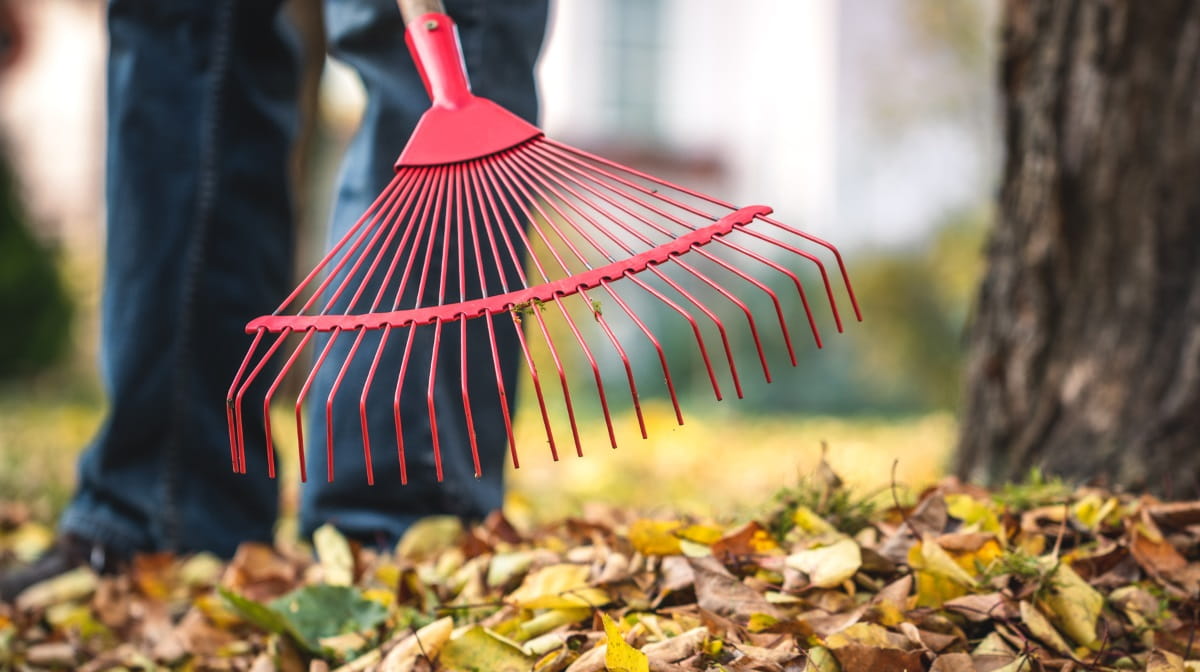



Many thanks. Very nice set of rake types. Clearly informative.
Doug, thanks so much.